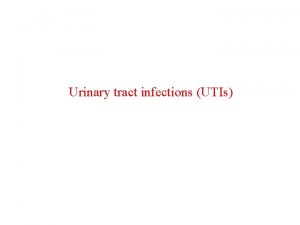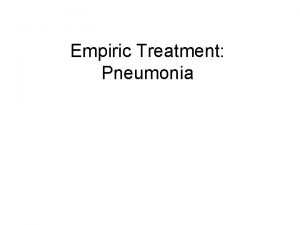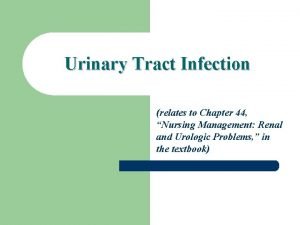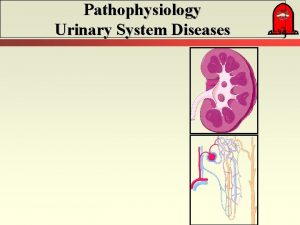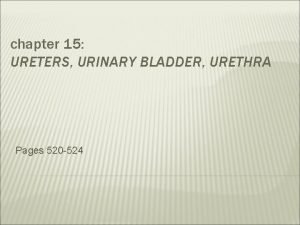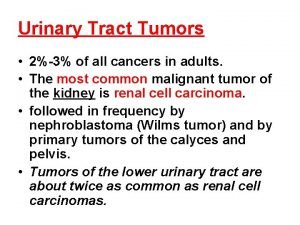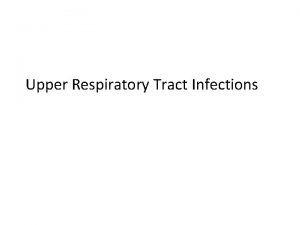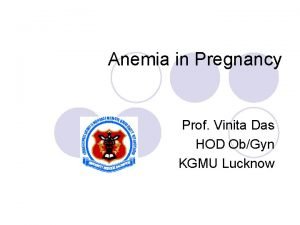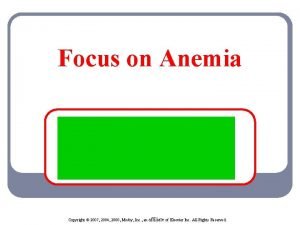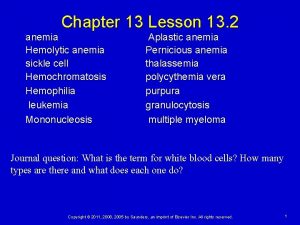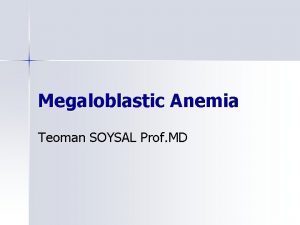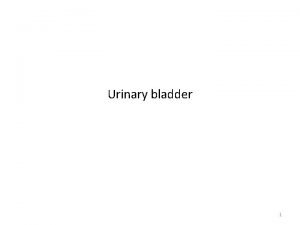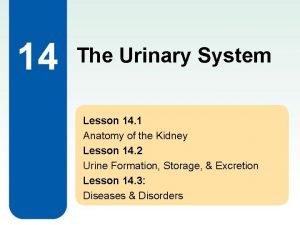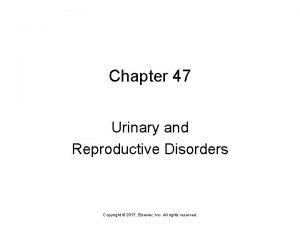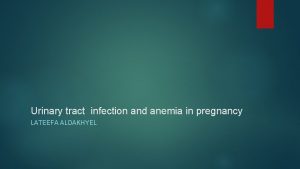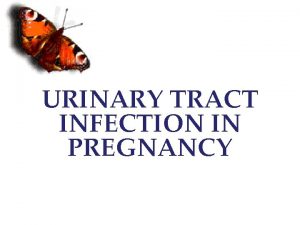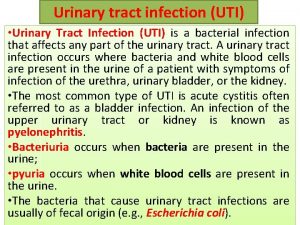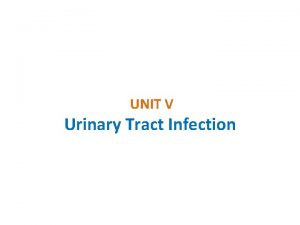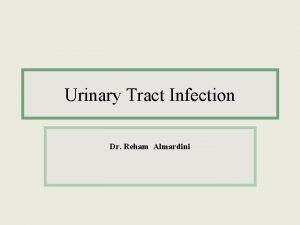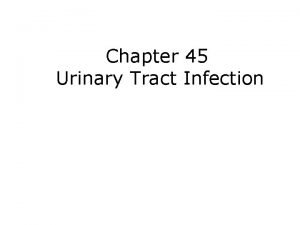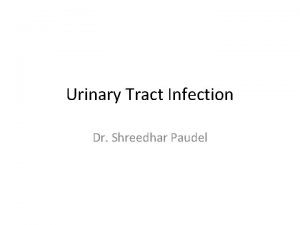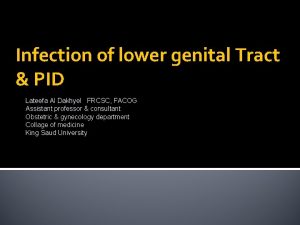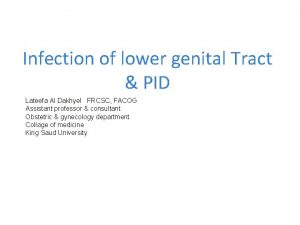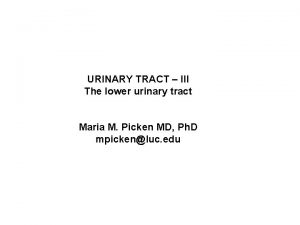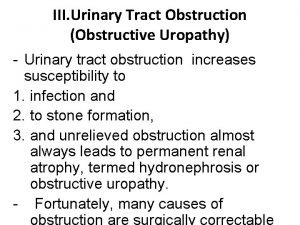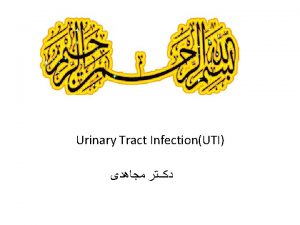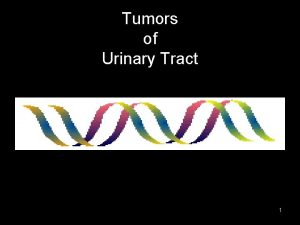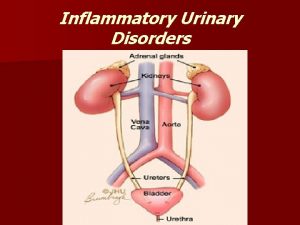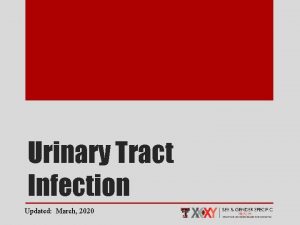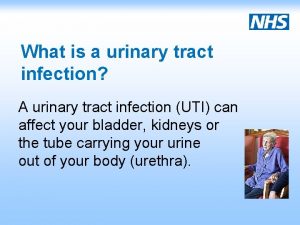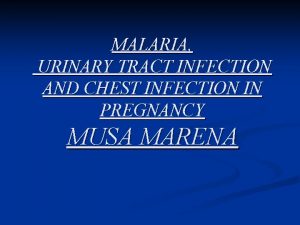Urinary tract infection and anemia in pregnancy LATEEFA


























- Slides: 26

Urinary tract infection and anemia in pregnancy LATEEFA ALDAKHYEL

Urinary Tract Infections in Pregnancy Urinary Tract Infections (terminology ) Bacteriuria Bacteria in the urine Significant bacteriureia = or > 105 CFU/m. L of urine Asymptomatic bacteriuria Lower UTI /cystitis Upper UTI / pyelonephritis

Types of UTI Recurrences 1. Relapse: same organism within 2 -3 wks 2 ndry to perineal colonization or inadequate Rx 2. Reinfection: 2 ndry to recurrent new organism within 12 wks bladder bacteriuria 3. Superinfection: new organism while on Rx 4. recurrent UTI : 2 in 6 months or = >3 in 1 year

Types of UTI Recurrences 1. Relapse: same organism within 2 -3 wks 2 ndry to perineal colonization or inadequate Rx 2. Reinfection: new organism within 12 wks 2 ndry to recurrent bladder bacteriuria 3. Superinfection: new organism while on Rx Prevention: Prenatal screening for ASB in pregnant women

Urinary Tract Infections in Pregnancy Common medical complication of pregnancy (2 -10%) Pathphysiology: ascending infection from vagina and rectum Most common causative organisms: gram –ve enteric bacteria (e. g: E. Coli 60 -80%, Proteus, K. Pnemoniae, Pseudomonas, and GBS) Lactobacilli cause no UTI

Urinary Tract Infections in Pregnancy Common medical complication of pregnancy (2 -10%) Pathphysiology: ascending infection from vagina and rectum Most common causative organisms: gram –ve enteric bacteria (e. g: E. Coli 60 -80%, Proteus, K. Pnemoniae, Pseudomonas, and GBS) Lactobacilli cause no UTI


Anatomic Changes in Pregnancy Kidneys: in length, weight, and pelves size (physiologic hydronephrosis); Rt > Lt Ureters: dilated or hydroureter (Rt > Lt), urinary stasis Mechanism: hormonal or mechanical Consequences: risk of urinary tract infections

Physiologic Changes in Pregnancy 40 -50% in renal blood flow and glomerular filtration rate (GFR) creatinine clearance serum level of creatinine, urea, uric acid by 25% Fluid volumes: extracellular volume (intravascular 50% & interstitial component) Na & Ka levels maintained Chronic loss of renal HCO 3 risk of metabolic acidosis

Risk Factors for UTI’s in Pregnancy 1. Mechanical obstruction: ureteropelvic junction, urethral or ureteric stenosis, & calculi 2. Functional obstruction: pregnancy & vesicoureteral reflux 3. Systemic diseases: DM, sickle cell trait/disease, gout, cystic renal disease

Classification of UTI’s Clinical: Asymptomatic (8%) Symptomatic (1 -2%) Anatomical: Lower tract dis: asymptomatic bacteriuria and acute cystitis Upper tract dis: acute pyelonephritis

Asymptomatic Bacteriuria (ABU) Incidence in pregnancy: 2 -10% similar to sexually active women Consequences: acute pyelonephritis (30%) Clinical presentation: ? ? Diagnosis: ? Management: outpatient Abx ( amoxil, 1 st generation cephalosporin, nitrofurantoin) length: 3 -10 days

Acute Cystitis Incidence in pregnancy: 1 -2% Consequences: acute pyelonephritis (30%) Clinical presentation: Diagnosis: Management: outpatient Abx , analgesics Length: 7 -10 days Re culture

Acute Pyelonephritis Incidence in pregnancy: 2 -4% The leading cause of ARDS and septic shock in pregnancy Most commonly in second Tx Consequences: sepsis, adult respiratory syndrome, anemia, renal failure, preterm labor Clinical presentation: fever/chills, CVA tenderness, nausea and vomiting

Acute Pyelonephritis Diagnosis: S&S Leukocytosis Urine culture Blood culture +ve in 10% Management: Inpatient - Admission - Antipyretic agents - Abx ( i. v. ampicillin or cephalosporin then p. o) Length: 10 -14 days Re culture 10 -25% recurrent

Prevention: Prenatal screening for ASB in pregnant women

Anemia in pregnancy

Physiologic anemia (dilutional anemia) dilution because the plasma volume expands more than the erythrocyte volume (The hematocrit in pregnancy normally drops several points below its pregnancy level) the oxygen-carrying capacity of the blood is not deficient

The total blood volume increase by 40%(10 -24 w) Hct decreases from between 38 and 45% in healthy women who are not pregnant to about 34% during late single pregnancy and to 30% during late multifetal pregnancy Red cell mass (driven by an increase in maternal erythropoietin production) also increases, but relatively less, compared with the increase in plasma volume Thus during pregnancy, anemia is defined as Hb < 10 g/d. L (Hct < 30%)

Women after middle age: 11. 7 to 13. 8 gm/dl

Thus during pregnancy, anemia is defined as Hb < 10 g/d. L (Hct < 30%) Women who take iron supplements have less pronounced changes in hemoglobin, as they increase their red cell mass in a more proportionate manner than those not on hematinic supplements.


Pathological anemia the oxygen-carrying capacity of the blood is deficient because of disordered erythrocyte production or excessive loss of erythrocytes through destruction or bleeding Anemia occurs in up to one third of women during the 3 rd trimester

Anemia in pregnancy Causes Iron deficiency Folate deficiency HEMOGLOBINOPATHIES

Iron deficiency anemia CBC, MCV value MCV is low (<79 f. L) masurement of serum iron, ferritin, and transferrin Typically, Hct is ≤ 30%, and MCV is < 79 f. L. Decreased serum iron and ferritin and increased serum transferrin levels confirm the diagnosis. Usually ferrous sulfate 325 mg po once/day parenteral therapy IM: 20% of pregnant women do not absorb enough supplemental oral iron absolute non-compliance IV: faster increases in Hb and better replenishment of iron stores in comparison with oral therapy,

Folate deficiency ( Megaloblastic Macrocytic Anemia) increases risk of neural tube Deficiency occurs in 0. 5 to 1. 5% of pregnant women Diagnosis Measurement of serum folate Severe megaloblastic anemia may warrant bone marrow examination and further treatment in a hospital Treatment is folate 1 mg po bid
 Urinary tract infection in pregnancy ppt
Urinary tract infection in pregnancy ppt Sterile pyuria ppt
Sterile pyuria ppt Complicated urinary tract infection
Complicated urinary tract infection Nursing management for urinary tract infection
Nursing management for urinary tract infection Uti
Uti Histological structure of kidney
Histological structure of kidney Urethra
Urethra Tumor in the urinary tract
Tumor in the urinary tract Classification of upper respiratory tract infection
Classification of upper respiratory tract infection Conclusion of respiratory tract infection
Conclusion of respiratory tract infection Sexually transmitted diseases
Sexually transmitted diseases Definition of spotting during pregnancy
Definition of spotting during pregnancy Difference between pyramidal and extrapyramidal tract
Difference between pyramidal and extrapyramidal tract Anterior spinothalamic tract
Anterior spinothalamic tract Anemia in pregnancy guideline
Anemia in pregnancy guideline Cases of iron deficiency anemia
Cases of iron deficiency anemia Anemia pregnancy
Anemia pregnancy Nursing diagnosis of protein energy malnutrition
Nursing diagnosis of protein energy malnutrition Megaloblastic anemia vs pernicious anemia
Megaloblastic anemia vs pernicious anemia Megaloblastic anemia laboratory findings
Megaloblastic anemia laboratory findings Megaloblastic anaemia definition
Megaloblastic anaemia definition Urinary bladder apex and base
Urinary bladder apex and base Lesson 14.2 male and female urinary structures
Lesson 14.2 male and female urinary structures Red and white blood cells difference
Red and white blood cells difference Chapter 47 urinary and reproductive disorders
Chapter 47 urinary and reproductive disorders Pregnancy and infant cohort monitoring and evaluation
Pregnancy and infant cohort monitoring and evaluation Puncture resistant container
Puncture resistant container
